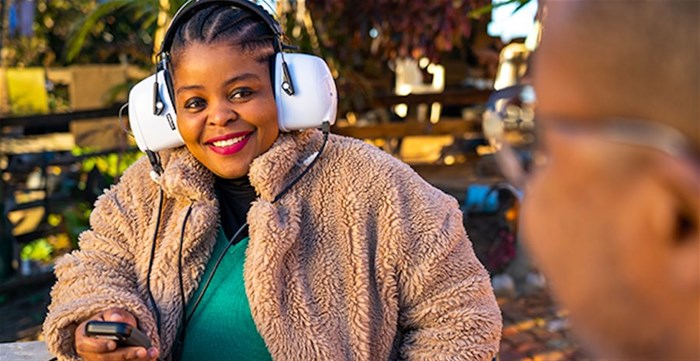
The South African manufactured portable audiometer called the Kuduwave is a medically certified device which has been revolutionising the testing and diagnosis of auditory related deficiencies in South Africa since 2009. It combines the headset, audiometer, and sound booth into a single, lightweight device, which is made for use anywhere. It has been found of particular value in industries such as mining and manufacturing where noise pollution has a significant effect on employees.
Although already well integrated into several industries, many occupational health specialists still have unanswered questions or misinformation about the Kuduwave. In this article, we outline some of the most prevalent industry misperceptions about the Kuduwave, and provide facts to dispel each of them.
According to the American National Standards Institute (ANSI), 'portable' is a term which refers to transportable equipment that is intended to be moved from one location to another while carried by one or more persons. The term 'mobile', on the other hand, refers to transportable equipment intended to be moved from one location to another while supported by its own wheels or equivalent means. Going by the ANSI definitions, compact, lightweight Kuduwave audiometers are most definitely portable, while huge, bulky sound booths full of audiometric equipment that are moving around independently on wheels, either by rail or road, would fall under the mobile audiometer category.
The Kuduwave OH and Kuduwave Prime are clinically validated, telemedicine-enabled screening audiometers, most often used for hearing conservation programmes in occupational health and other workplace environments.
Kuduwave audiometers are ISO 13485 certified, SAHPRA registered, FDA listed, and are compliant with all IEC, ANSI and SANS standards for audiometry, tympanometry, and calibration.
Used by Nasa astronauts aboard the International Space Station and by the South African government (to name just one) in our country’s National MDR-TB Programme, the Kuduwave portable audiometer is industry accredited and has been the subject of numerous published scientific studies. This highly accurate, clinically validated audiometric instrument is internationally distributed in over 30 countries.
Audiograms obtained using the highly accurate, clinically validated Kuduwave portable audiometer are just as valid and acceptable as those obtained during hearing tests using an audiometric sound booth.
It is a computer-controlled, diagnostic audiometric device, and cannot be controlled or operated by means of a mobile phone application. It is important to note that mobile audiometric (hearing) apps are usually utilised for screening purposes only, as they lack the ability to attenuate ambient noise sufficiently to allow for threshold searching down to 0 dB HL across the frequency range.
Mobile audiometric apps do not have the diagnostic capabilities that allow for diagnostic audiometry. Therefore, results obtained from using mobile audiometric apps cannot be compared with those from a diagnostic audiometer, such as the Kuduwave. The Kuduwave is a portable diagnostic audiometer in accordance with ISO 60645-1. As such, the device has been independently evaluated and validated as a reliable and accurate diagnostic audiometer by academic institutions across the globe.
When compared to industry-standard audiometric measurements, the Kuduwave portable audiometer has been reported to yield reliable and accurate air- and bone-conduction measurements within 5 dB of industry-standard traditional audiometry.
This makes the Kuduwave portable audiometer a clinically validated diagnostic audiometer with clinically acceptable test results. Medical devices such as the Kuduwave portable audiometer have to undergo clinical evaluation in order to demonstrate clinical equivalence with industry-standard audiometers prior to receiving an EU CE mark.
This makes the test results yielded by the Kuduwave portable audiometer clinically accurate, reliable, and industry accredited.
SANS 10083 (The Measurement and Assessment of Occupational Noise for Hearing Conservation Purposes) covers both the type of audiometric equipment that should be used for hearing conservation purposes and the audiometric measurements (i.e. baseline, periodic screening and exit audiometry) required for hearing conservation in the occupational setting.
Table 1.1 details how the Kuduwave portable audiometer complies with the audiometric (required) sections of the SANS 10083 standard.
The isolation of the testee or patient from background noise during audiometry is an inherent part of audiometric measurement. Traditionally, this isolation is achieved through the use of an audiometric sound booth. However, the use of an audiometric sound booth is only necessary and correct if using traditional audiometers with supra-aural and some circum-aural headsets.
The amount of noise the Kuduwave portable audiometer can block out, as well as whether the Kuduwave can perform screening and diagnostic audiometry outside of a sound booth has been clinically evaluated, validated, and published in numerous peer-reviewed journals, confirming the device’s accuracy and efficacy.
Learn more about the Kuduwave’s powerful screening and diagnostic capabilities.
Instead, in South Africa, the organisation tasked with the regulation of medical devices is SAHPRA, the South African Health Products Regulatory Authority. In order to place a medical device in the South African marketplace, manufacturers require a SAHPRA licence, which has been duly awarded to eMoyo as the manufacturer of the Kuduwave portable audiometer.
In order to place a medical device in other markets, such as the EU, UK and USA, either a European Union CE (Conformitè Europëenne) mark, UKCA (UK Conformity Assessed) mark and/or FDA (US Food & Drug Administration) registration is required.
EMoyo is a certified ISO-13485 medical device manufacturer. Additionally, eMoyo is registered with the MHRA (Medicines and Healthcare products Regulatory Agency) in the UK, as well as with the FDA in the USA.
Furthermore, eMoyo will shortly be applying for the UKCA mark in Great Britain.
Diagnostic hearing tests conducted using the Kuduwave portable audiometer yields results that are just as accurate as audiometric tests conducted while using a traditional audiometric sound booth.
Need more proof? View several peer-reviewed, published studies confirming the accuracy and efficacy of the Kuduwave portable audiometer here.
https://emoyo.tech/